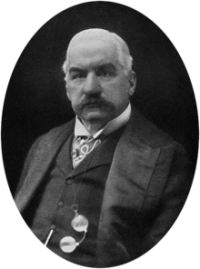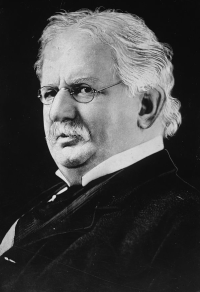
They see it as a victory for liberal values.
I read it as a victory for business. Which isn’t necessarily a different thing.
Fact is, the business of America is business. America has always been led by a dominant industry. Farming, then cotton, then railroads, then infrastructure, manufacturing, oil, and now technology.
Power flows to the highest-value industry and, when that is supplanted, flows away from it. Just as cotton lost to the railroads in the Civil War, I believe railroads lost to infrastructure in the Progressive Era.
What the great inventions of the late 19th century – electricity, telephony, and the automobile – required for mass adoption was scaled, organized infrastructure. Having two or more electric utilities, two or more phone companies, or (God forbid) two or more private road networks made no sense. What Wall Street saw in the 1890s was that monopolies created efficiency.
But the monopolies would need the approval of government. The price of government approval, in a democracy, would be regulation, and some means of control over the result.

This deal held on a local, state and (to a lesser degree) a federal level, for electricity and natural gas pipelines. Direct government control was needed for transit, so government agencies bought the subways, and government agencies built the roads.
What I call the Era of Infrastructure is what built the modern American city. Most of what my (now) century-old home needed for a good life were in place when it was built. A natural gas company. A telephone company. An electricity company. The roads. They were created either through government or with it, in the name of distributing capital efficiently. These systems, in turn, let manufacturers operate with some assurance on their input costs. Stable commodity prices and efficient supply chains made mass manufacturing possible.
To move forward from here, the Technology Era requires the same sort of cooperation. Since 2009, I’ve been writing about this as the Obama Thesis of Consensus. We don’t have to agree, but we do have to get along.

The same is true for politics. It’s time to make institutions great again. We need Foundations that create standards we can build on, and governance that people will trust, as they trusted the structures built by the Progressive movement and big business in the early 20th century.
We are seeing a demonstration of that need right now. The President is showing what can happen through consensus, even between adversaries. The House is showing the costs of failing to seek that consensus. The market is learning this lesson, stocks tanking as a minority of the House exerts control over the majority. It’s also clear that consensus is what most people believe in, as Trumpists were mostly hammered in November. It wasn’t a complete victory, but it shows the direction.
The momentum will continue toward consensus because technology demands it. We’re still in a technology era and so long as tech is where the money is, tech will get the power it needs from government.











You made many great points here. If only young people today could be as business orientated as these genius founders.
You made many great points here. If only young people today could be as business orientated as these genius founders.